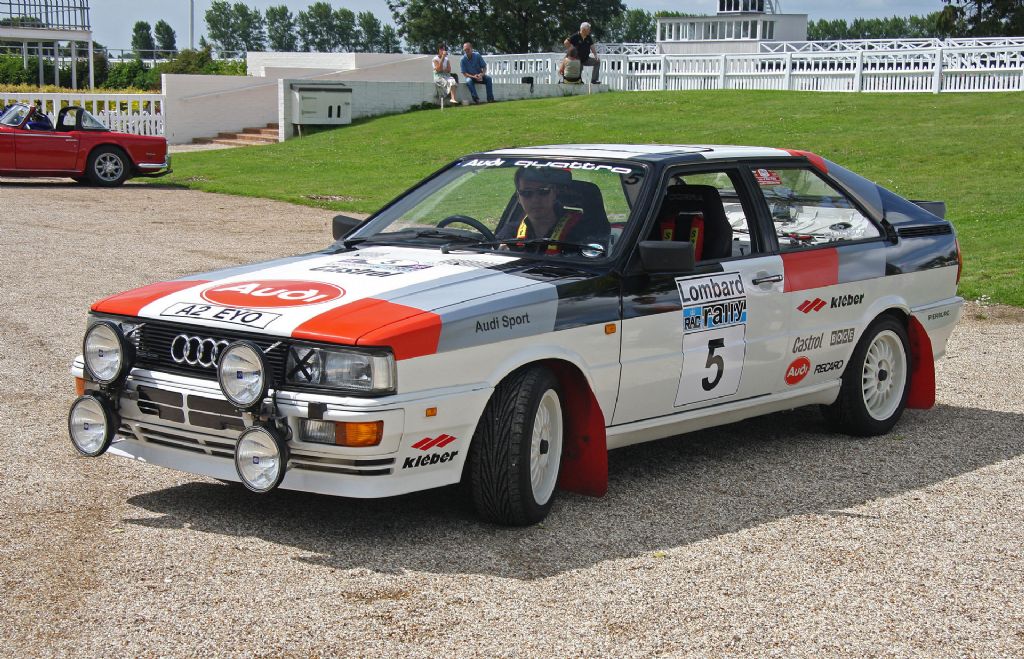Home > Classic Car Data > Audi Quattro Coupe
Audi Quattro Coupe
Intelligence Data:
About the Audi Quattro Coupe
The original Audi Quattro was introduced in late 1980, It boasted a permanent four-wheel drive system, and a turbocharged engine.
The quattro was partially hand-built on a dedicated production line. The main external design of the car remained unchanged throughout production, although clearly there were specific items related to the cars built specifically for rallying. Technical specification was impressive. The displacement of the engine was dropped slightly from 2144 cc to 2133 cc with a bore x stroke of 79.3 mm × 86.4 mm (3.1 in × 3.4 in) for the Rally car so that Audi could satisfy the 3-litre rallying class with a 1.4 times multiplication factor. Valvetrain was DOHC 4 valves per cylinder (20 valves in total) with an oil cooled KKK K27 turbocharger at 1.03 bars (14.9 psi) and Air-to-Air - Längerer & Reich intercooler fed by Bosch LH-Jetronic fuel injection, generating 225 kW (306 PS; 302 hp) at 6,700 rpm and 350 N⋅m (258 lbf⋅ft) of torque at 3,700 rpm.
For the 1983 model year a green digital liquid crystal display electronic instrument cluster replaced the analogue instruments. This was later changed in 1988 to an orange LCD instrument cluster. The interior was redesigned in 1984, and featured a new dashboard layout, new steering wheel design, and new centre console design, the switches around the instrument panel were also redesigned. In 1985, the dashboard changed slightly with harder foam and it lost a diagonal stripe, the switches were varied slightly and the diff lock pull knob gave way to a two-position turn knob with volt and oil temp digital readouts.
Exterior styling received little modification during the Quattro's production run. Originally, the car had a flat front grille featuring four separate headlamp lenses, one for each of the low and high beam units. This was altered for the 1983 model year with combined units featuring a single lens housing twin reflectors. This was changed again, for the 1985 model year, in what has become known as the 'facelift model' and included such alterations as a new sloping front grille, headlights, and trim and badging changes. The 20V RR Quattro also featured a new three-spoke steering wheel design, leather trim for door arm rests, gloveboxes, centre console and door pockets. There was also a full length leather-wrapped centre console running all the way to the rear seats and 'quattro' script on the interior with partial leather seats. The floor on the driver's side had a bulge due to dual catalytic exhaust setup. The different models may be distinguished by the emblems on their boot lids: the WR had a vinyl 'quattro' decal or a brushed aluminium effect plastic emblem, the MB had chrome plated 'Audi', 'Audi rings' and 'quattro' emblems, whilst the RR had only chrome plated 'Audi rings'.
The rear suspension was altered early on with geometry changes and removal of the rear anti-roll bar to reduce a tendency for lift-off oversteer. For the 1984 facelift, the wheel size went from 6x15-inch with 205/60-15 tyres to 8x15-inch wheels with 215/50-15 Pirelli Cinturato P5 tyres. At the same time the suspension was lowered by 20 mm with slightly stiffer springs for improved handling. For 1987, the Torsen centre differential was used for the first time, replacing the manual centre differential lock.
The last original Audi Quattro was produced on 17 May 1991, more than two years after the first models of the new Audi Coupé (8B) range (based on the 1986 Audi 80) had been introduced.
Vital Statistics
| Years: | 1980 to 1991 |
| Produced: | 11452 vehicles |
| Capacity: | 2144/2226 cc |
| Engine: | 5 cylinder inline SOHC/DOHC |
| Power: | 197/217 |
| Top Speed: | 137/143 |
Source: Wikipedia
Photo/s: Click Here
Audi Quattro Coupe Gallery
Search Database
Classified Alerts
We can help you find the classic vehicle you desire.
Advertise Here
You can advertise your business here. Call us on
01892 457670


